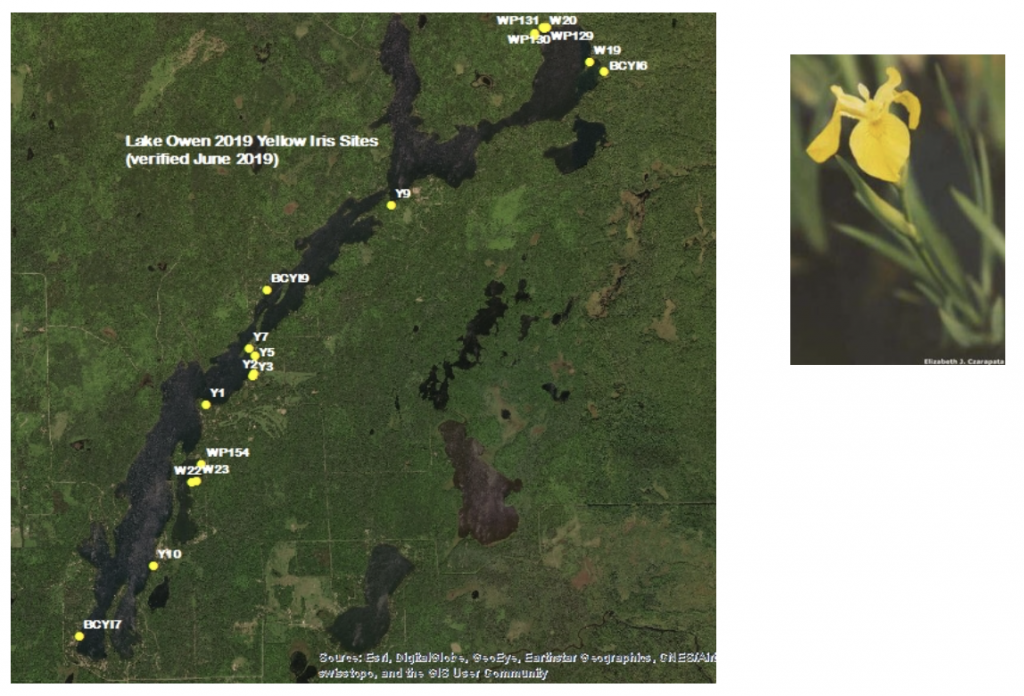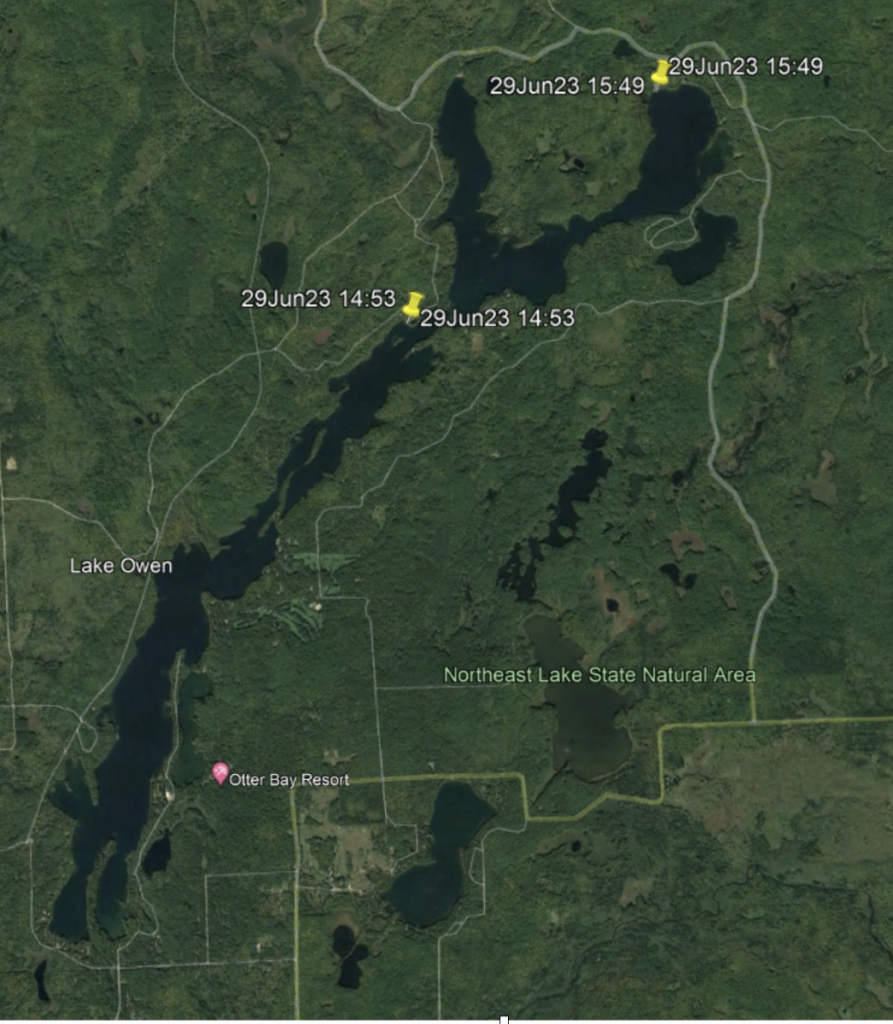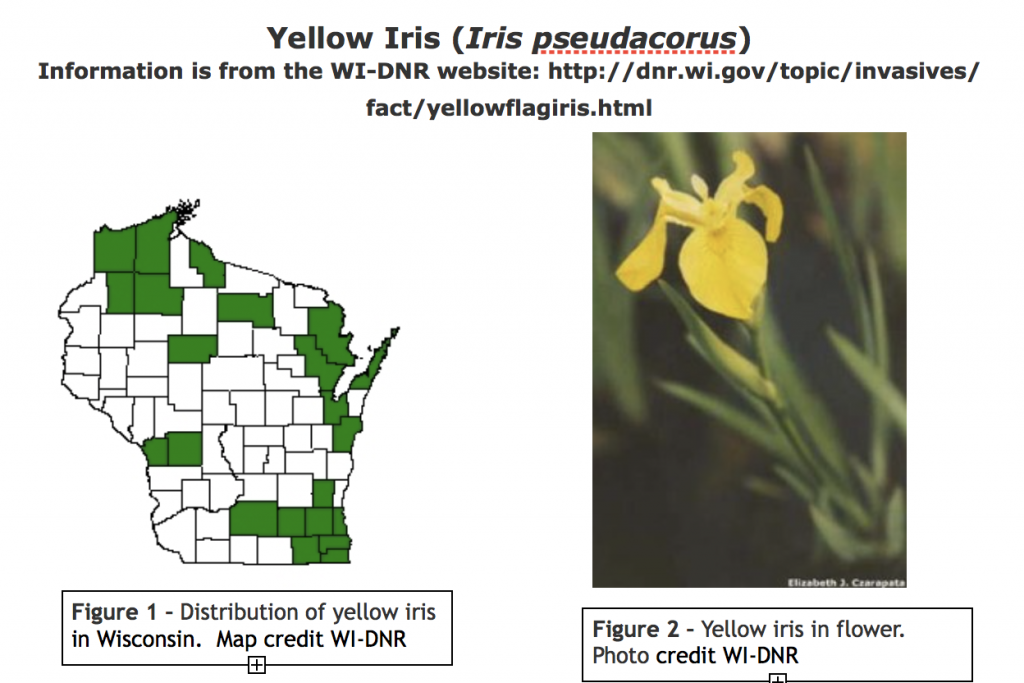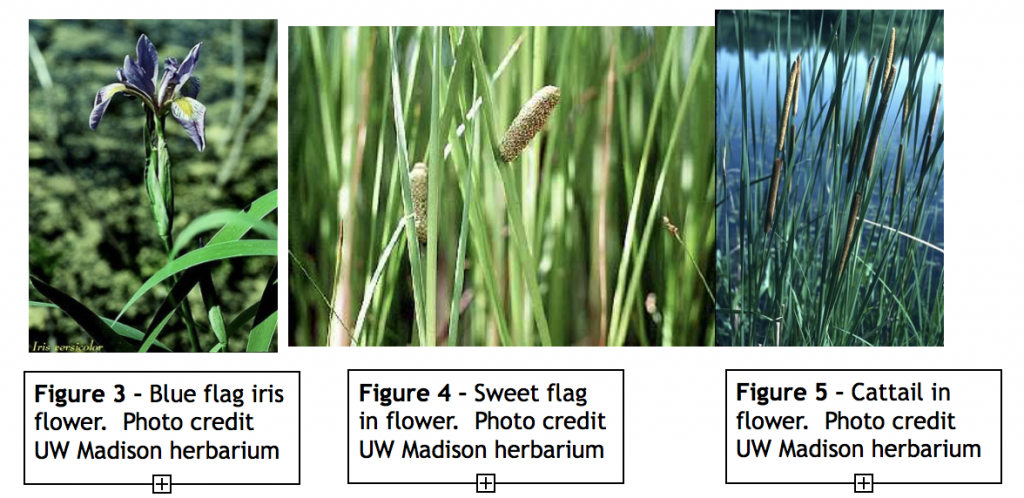Yellow Flag Iris Control on Lake Owen
Yellow iris is one of three invasive plants present in Lake Owen. The other aquatic species are aquatic forget-me-not and phragmites grass, both shoreline plants. Although Yellow Iris is a showy, flowering plant, it is a concern, and we are working to remove it from our shorelines. A USFS fact sheet reports “it can form dense colonies and impenetrable thickets in fresh or brackish water displacing native species and altering habitat for animals. All parts of the plant are poisonous.” For more information on about this invasive species, go to:
Our lake manager crew identified and marked yellow iris in 19 locations along Lake Owen shores in 2019. We received permission to chemically treat these plants to remove them at all but one of the locations shown in the map. This included permission to remove the plants from US Forest Service land. Although it is a good idea to remove seed pods to prevent yellow flag iris spread, manual removal efforts in other lakes have proven ineffective in controlling yellow iris.

The Contractor Dale Dressel, from Northern Aquatic Services, completed the Lake Owen Association-sponsored yellow iris treatment on September 4, 2019. He treated a total of 18 sites. Dale also collected 8 pounds of yellow iris seed pods. Yellow Iris Herbicide Treatment 2019
The 2020 Aquatic Invasive Species Survey demonstrated that yellow iris was effectively controlled in 2019. June 2020 AIS survey results
2021 and 2022 Lake Owen Yellow Iris Mitigation efforts demonstrated further progress. 2021 and 2022 Lake Owen Yellow Iris Mitigation Efforts
Comparing the current map to the 2019 map above, much progress has been made.

By 2023, we had only two sites with yellow iris present and both were sparse enough to remove manually.
If you believe you have yellow iris on your property and have not been contacted by an LOA representative previously, please contact our Lake Manager, Cheryl Clemens (harmonyenv@amerytel.net or 715-225-0690). Yellow iris monitoring is a part of our Wisconsin Department of Natural Resources Aquatic Invasive Species Grant project.

Description of the plant:
Leaves & stems : Broad, sword-shaped leaves grow upright, tall, and stiff. They are green with a slight blue-grey tint and are very difficult to distinguish from other ornamental or native iris species. Flowers are produced on a stem that can grow 3-4 feet tall amongst leaves that are usually as tall or taller.
Flowers: Showy and variable in color from almost white to a vibrant dark yellow. Flowers are between 3-4 inches wide and bloom from April to June. Three upright petals are less showy than the larger three downward pointing sepals, which may have brown to purple colored streaks.
Fruits & seeds: Seeds are produced in fruits that are 6-angled capsules, 2-4 inches long. Each fruit may have over 100 seeds that start pale before turning dark brown. Each seed has a hard outer casing with a small air space underneath, which allows the seeds to float.
Roots: Thick, fleshy pink-colored rhizomes (underground stems) spread extensively in good conditions, forming thick mats that can float on the surface of water.
Similar species: When not flowering, yellow flag iris could be easily confused with the native blue flag iris (Iris versicolor) as well as other ornamental iris that are not invasive. Blue flag iris is usually smaller and does not tend to form as dense clumps or floating mats. When not flowering or showing fruiting bodies, yellow flag iris may be confused with other wetland plants such as cattails (Typha spp.) or sweet flag (Acorus spp.) species.

Control Methods
Mechanical:
Small populations may be successfully removed using physical methods. Care should be taken if hand-pulling plants as some people show skin sensitivity to plant sap and tissues. All parts of the plant should be dug out – particularly rhizomes and disposed of in landfill or by burning.
Cutting the seed heads may help decrease the plant spreading.
Chemical:
Aquatic formulas of herbicides may be used to control yellow flag iris, however, permits may be needed. Foliar spray, cut stem/leaf and application and hand swiping of herbicide have all shown effectiveness.
The Lake Owen Association applied for and received DNR permits each year when treatment occurred.

